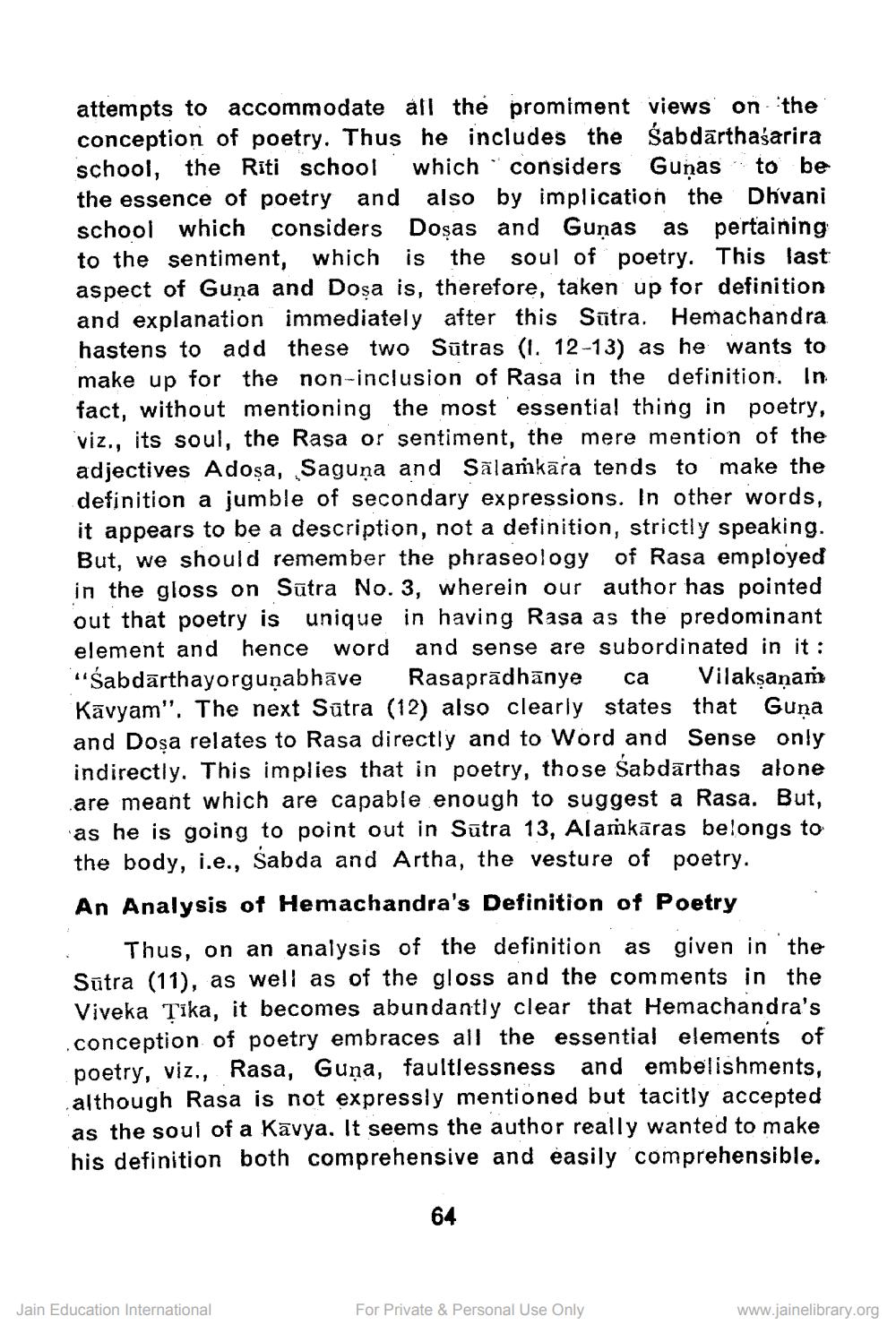________________
attempts to accommodate all the promiment views on the conception of poetry. Thus he includes the Sabdarthasarira school, the Riti school which considers Guņas to be the essence of poetry and also by implication the Dhvani school which considers Doșas and Guņas as pertaining to the sentiment, which is the soul of poetry. This last aspect of Guņa and Doşa is, therefore, taken up for definition and explanation immediately after this Sūtra. Hemachandra hastens to add these two Sūtras (1. 12-13) as he wants to make up for the non-inclusion of Rasa in the definition. In fact, without mentioning the most essential thing in poetry, viz., its soul, the Rasa or sentiment, the mere mention of the adjectives Adoșa, Saguna and Sālaṁkāra tends to make the definition a jumble of secondary expressions. In other words, it appears to be a description, not a definition, strictly speaking. But, we should remember the phraseology of Rasa employed in the gloss on Sūtra No. 3, wherein our author has pointed out that poetry is unique in having Rasa as the predominant element and hence word and sense are subordinated in it: "Śabdārthayorguṇabhāve Rasaprādhānye ca Vilakşaņas Kāvyam". The next Sūtra (12) also clearly states that Guņa and Dosa relates to Rasa directly and to Word and Sense only indirectly. This implies that in poetry, those Sabdārthas alone are meant which are capable enough to suggest a Rasa. But, as he is going to point out in Sūtra 13, Alamkāras belongs to the body, i.e., Sabda and Artha, the vesture of poetry. An Analysis of Hemachandra's Definition of Poetry : Thus, on an analysis of the definition as given in the Sūtra (11), as well as of the gloss and the comments in the Viveka Tika, it becomes abundantly clear that Hemachandra's .conception of poetry embraces all the essential elements of poetry, viz., Rasa, Guņa, faultlessness and embelishments, although Rasa is not expressly mentioned but tacitly accepted as the soul of a Kāvya. It seems the author really wanted to make his definition both comprehensive and easily comprehensible.
64
Jain Education International
For Private & Personal Use Only
www.jainelibrary.org




